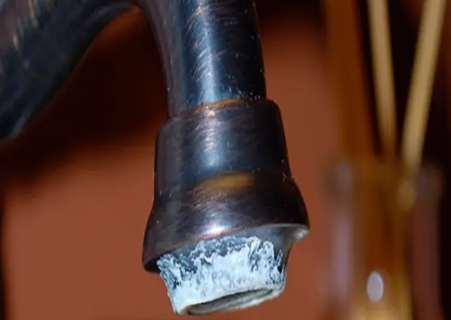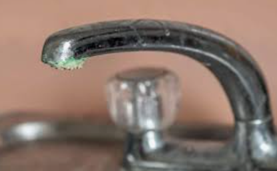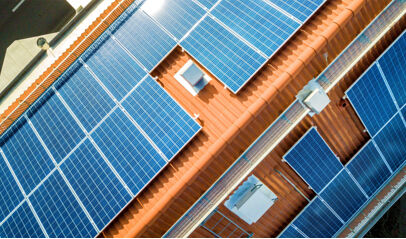How to Remove Calcium Buildup on Faucet: Step-by-Step Guide

Calcium buildup on faucets is a common problem many households face. These unsightly white deposits can affect the water flow and leave your faucet looking worn. Fortunately, you don’t need to spend a fortune on special products or professional services to tackle the problem. With a few simple household items and some elbow grease, you can remove calcium buildup and restore your faucet’s shine. If you're wondering how to remove calcium buildup on faucet, this guide will take you through easy, DIY steps to remove calcium deposits effectively.

What Causes Calcium Buildup on Faucets?
Calcium buildup, also known as limescale, often forms on faucets due to hard water, which contains high levels of dissolved minerals like calcium and magnesium. When hard water dries, it leaves behind these mineral deposits. Over time, the deposits accumulate and form a chalky layer that can be difficult to remove.
Faucets, being in constant contact with water, are particularly susceptible to calcium buildup. This is especially true if you live in an area with hard water. Understanding the cause of calcium buildup is essential in preventing and treating it. The minerals in hard water, when left unchecked, can not only dull the appearance of your fixtures but also affect their functionality over time.
How to Remove Calcium Buildup on Faucet: Step-by-Step
Step 1: Gather Necessary Materials
Before diving into the cleaning process, gather all the materials you’ll need:
• White vinegar
• Baking soda
• Soft cloth or paper towels
• Plastic bag or a large rubber band
• Old toothbrush
• A small bowl
• Sponge
Step 2: Prepare the Faucet Area
Clear the area around the faucet and ensure it’s free of any objects that might get in the way. Lay down some paper towels or an old cloth to catch any drips or residue. This preparation helps in making the clean-up process more manageable.
Step 3: Apply Vinegar Soak
Fill a plastic bag with white vinegar. Submerge the faucet head and secure the bag with a rubber band, ensuring the faucet parts are in contact with the vinegar. Let it soak for at least an hour. The acidity of the vinegar will break down the calcium deposits, making them easier to remove.
Step 4: Scrub with Baking Soda Paste
While the faucet soaks, mix baking soda with a little water to create a thick paste. After the vinegar soak, remove the bag and use an old toothbrush to apply the baking soda paste to the affected areas. Scrub gently to avoid scratching the surface. The mild abrasiveness of the baking soda will help in scrubbing off stubborn calcium deposits.

Step 5: Rinse and Dry Thoroughly
Once you’ve finished scrubbing, rinse the faucet with warm water to remove any vinegar and baking soda residues. Use a soft cloth to dry the faucet thoroughly. This step prevents any remaining water from forming new calcium deposits.
Are There Alternative Methods for Removing Calcium Buildup?
Using Lemon Juice
Lemon juice is a natural alternative to vinegar due to its citric acid content. You can squeeze fresh lemon juice onto the affected areas or soak a cloth in lemon juice and wrap it around the faucet. Let it sit for about an hour before scrubbing and rinsing.
Commercial Descaling Products
There are various commercial descaling products specifically designed to remove calcium buildup. These products may offer quicker results. However, always check the label to ensure it’s safe for your faucet’s material.
Professional Cleaning Services
If the buildup is severe or you’re uncomfortable tackling it yourself, hiring professional cleaning services is an option. Professionals have access to specialized tools and products that can effectively remove stubborn deposits without damaging your fixtures.
How Can You Prevent Future Calcium Buildup?
Regular Cleaning Routine
Implementing a regular cleaning routine can help prevent the formation of calcium deposits. Wipe and dry your faucet after each use to ensure no water is left standing.
Installing a Water Softener
A water softener system can significantly reduce the amount of calcium and magnesium in your water, preventing buildup on faucets and other fixtures.
Drying Faucets After Use
Simply wiping and drying your faucets after every use will go a long way in preventing calcium buildup. This practice ensures no water is left to evaporate and leave behind minerals.
Conclusion
Removing calcium buildup from faucets doesn’t have to be a daunting task. If you're wondering how to remove calcium buildup on faucet surfaces, household items like vinegar and baking soda offer an easy and effective solution. With these simple ingredients, you can restore the shine and functionality of your faucets in no time. Regular maintenance and preventive measures will help keep them looking their best for years to come.
FAQ
Can vinegar damage my faucet finish?
Vinegar is generally safe for most faucet finishes. However, prolonged exposure can dull certain materials. It’s best to test in an inconspicuous area first.
How often should I clean my faucet to prevent buildup?
A thorough clean every few weeks should suffice to prevent significant buildup, though wiping it down regularly will also help.
Is it safe to use commercial descalers on all faucet types?
Not all commercial descalers are suitable for every faucet type. Always read the product instructions and ensure it’s compatible with your faucet material.




